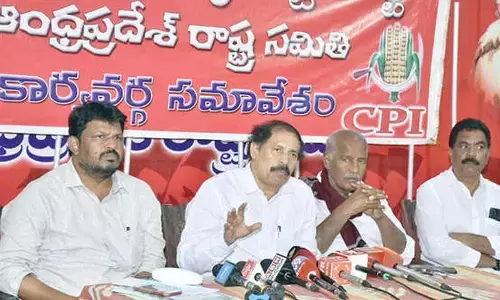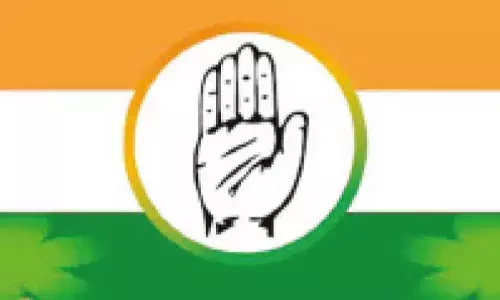Cost of populism

At last, the Chandrababu Naidu government has announced the process and norms for debt-relief scheme. The loan-waiver scheme turned out into a litmus test for his credibility and administrative acu- men.
.jpg) Governments should focus on making agriculture viable. There should be a paradigm shift in agricultural policy to make agriculture a self-sustaining sector rather than a support-driven one
Governments should focus on making agriculture viable. There should be a paradigm shift in agricultural policy to make agriculture a self-sustaining sector rather than a support-driven one
At last, the Chandrababu Naidu government has announced the process and norms for debt-relief scheme. The loan-waiver scheme turned out into a litmus test for his credibility and administrative acu- men. The norms have several ifs and buts. But, one thing is clear. The debt-redemption scheme, now being implemented, is a diluted version of the electoral promise. The TDP in a desperate bid to come back to power has promised a seemingly impossible scheme.
It claimed to have studied all its ramifications before commit- ting itself to such a populist measure. But, anyone who knows the basic arithmetic can tell us that it is a her- culean task. No state govern- ment has a fiscal mus- cle to implement such a pervasive populist scheme as promised by Chandrababu Naidu. The honest im- plementation of this promise without any dilution would have incurred an expendi- ture of more than one lakh crore.
It will be as high as the total budget of Andhra Pradesh government in a fi- nancial year. In fact, the UPA gov- ernment spent over Rs 70,000 crore when it implemented loan waiver for the entire country. This indicates the burden of fiscal profligacy on a state government that has little fiscal space to operate. Thus, the implementation of the loan-waiver scheme has seen many twists and turns. It should be a lesson for the future. Political parties cannot hold economy hostage to unlimited political populism.
It is true that the peasantry is in deep trouble. Agricul- ture has become a negative economic proposition. The unsustainable char- acter of the agrarian economy is re- sulting in unabated spate of farmers’ suicides. The governments should therefore focus on making agriculture viable. There should be a paradigm shift in agricultural policy to make agriculture a self-sustaining sector rather than a support-driven one.
The full and one-time redemption to small and marginal farmers up to Rs 50,000 is a welcome feature of the debt-redemption scheme. How- ever, there are many questions that still remain unan- swered. The first phase of the debt-re- lief scheme excludes lakhs of farmers. The debt burden still re- mains even for those who are covered under the present phase as only a proportion of debt is covered under the scheme.
Given this situation, it is difficult for the farmers to get sufficient credit in the years to come. Agriculture is still yielding negative rate of return. At a time when institutional credit does not cover substantial sections of peasantry, the half-hearted imple- mentation of the loan-waiver would perhaps leave more discontent.
It is only a matter of time whether the truncated implementation of such a prominent poll promise would be a political asset or a liability for Naidu. The government should immedi- ately focus on long-term measures to revive the agrarian economy so that loan-waiver would not be a regular feature. The loan waiver has already adversely affected the recovery cul- ture in the banking system














